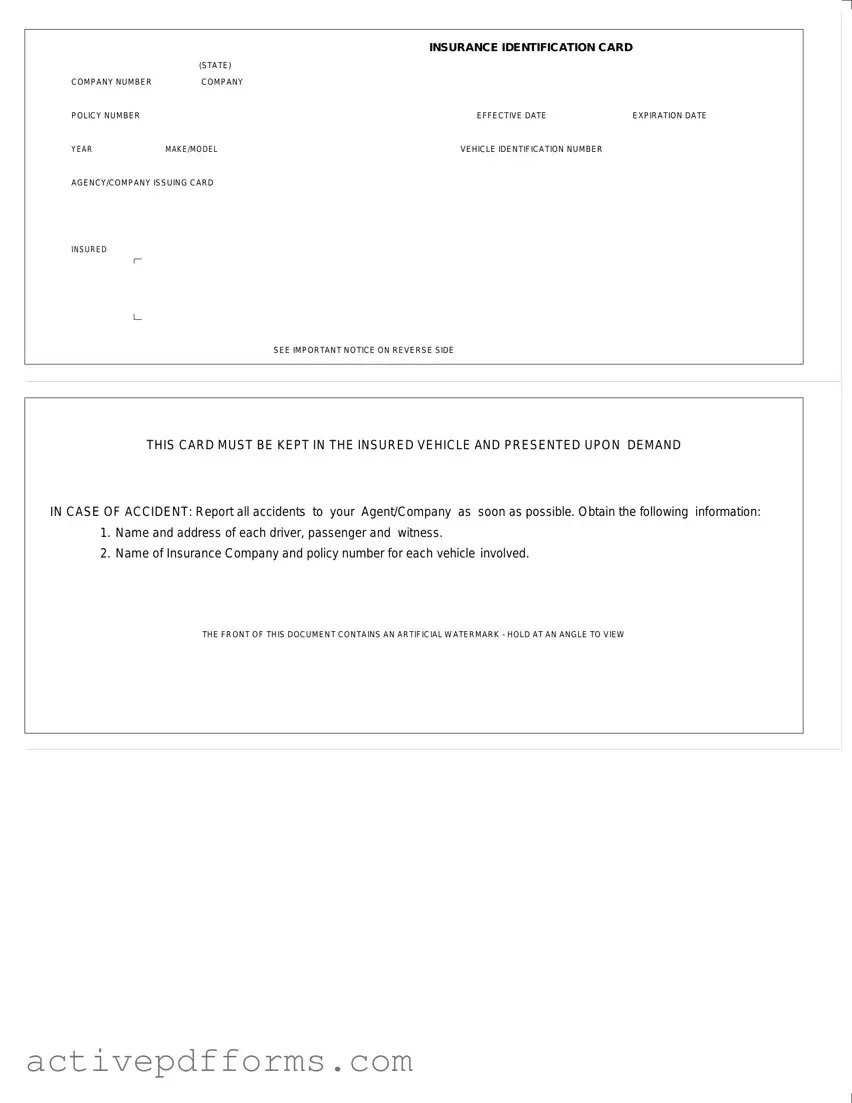An essential item for drivers, the Auto Insurance Card serves as proof of insurance coverage, carrying critical details about the policy and the vehicle it covers. Its design is straightforward, ensuring that all necessary information is easily accessible. This includes the insurance company's name and contact number, the policy number, and the card's effective and expiration dates—key data that illustrate the policy's validity period. Additionally, it provides specifics about the insured vehicle, such as the year, make, model, and the very important Vehicle Identification Number (VIN). The agency or company that issued the card is also listed, offering a direct line for queries or concerns. The card's reverse side offers guidance on immediate steps to take in the event of an accident, such as reporting the incident and collecting relevant information from all parties involved. A notable security feature is the artificial watermark on the front of the document, which can be viewed by holding the card at an angle. This card is not just a formality; it is a fundamental requirement for drivers, which must be kept in the vehicle and produced upon demand, making it a crucial component of automotive documentation.

